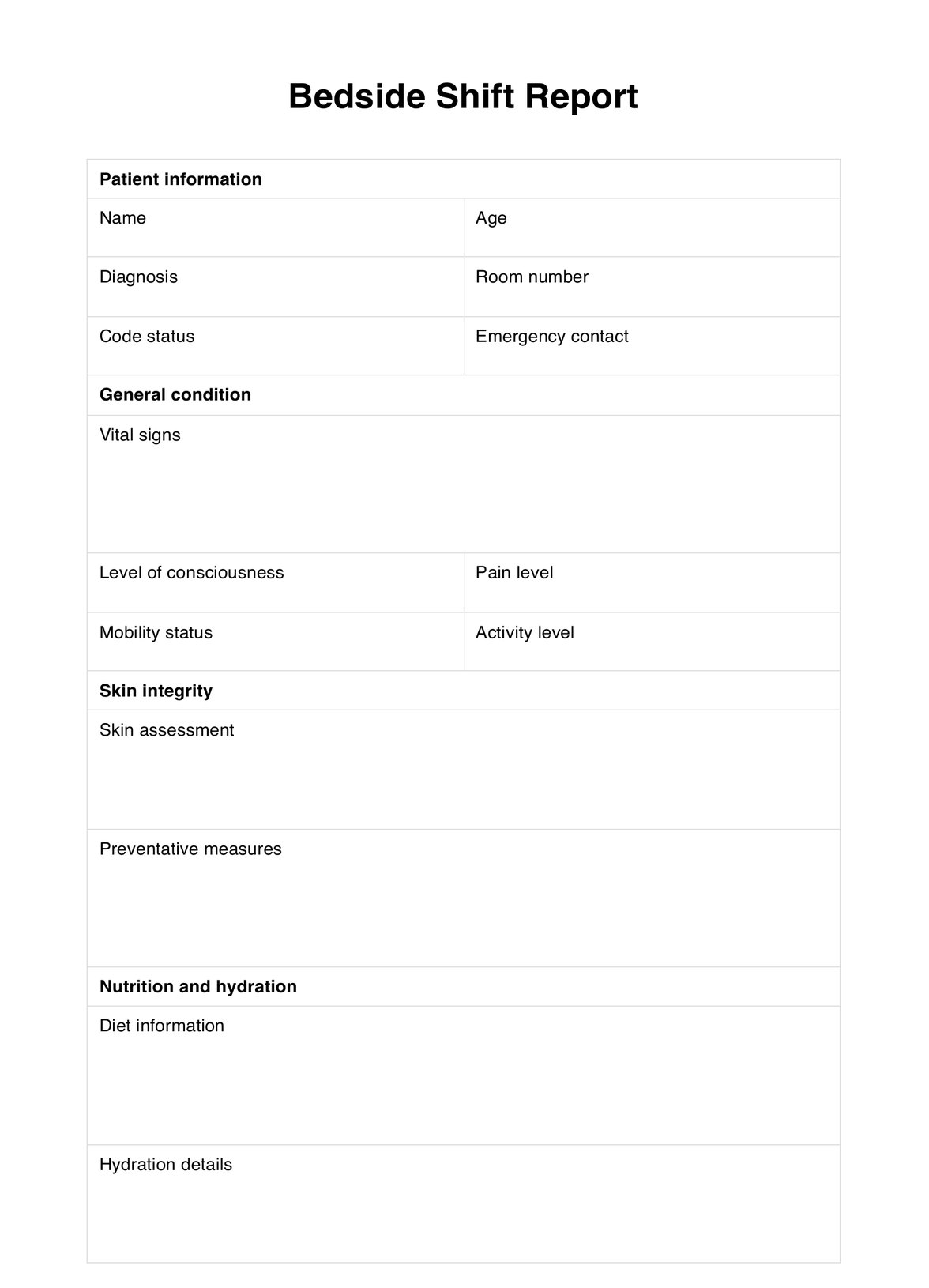A bedside shift report involves the oncoming nurse receiving a verbal or written report from the off-going nurse while at the patient's bedside. This report typically includes essential information such as the patient's current condition, any changes in medication or treatment plans, and any other relevant details for providing safe and effective care.

Bedside Shift Report
Learn about the benefits of a Bedside Shift Report for patient safety and nurse satisfaction. Download a free PDF template here.
Bedside Shift Report Template
Commonly asked questions
Bedside shift reports have improved patient safety, nurse satisfaction, and patient outcomes. Involving the patient and their family in the report promotes open communication and strengthens the nurse-patient relationship.
Implementing bedside shift reports reduces the risk of medical errors by involving both nurses in a collaborative review of important information. Additionally, incorporating bedside reporting allows for obtaining ongoing nursing feedback, which can help identify and prevent potential errors.
EHR and practice management software
Get started for free
*No credit card required
Free
$0/usd
Unlimited clients
Telehealth
1GB of storage
Client portal text
Automated billing and online payments











